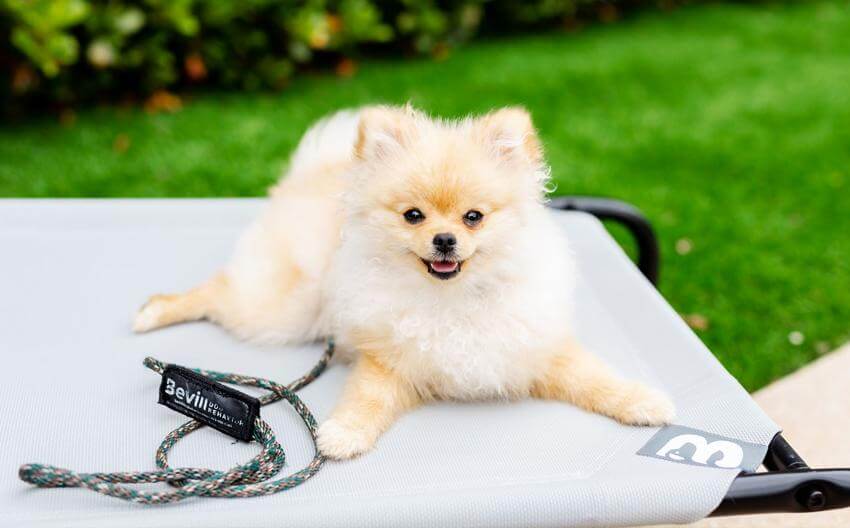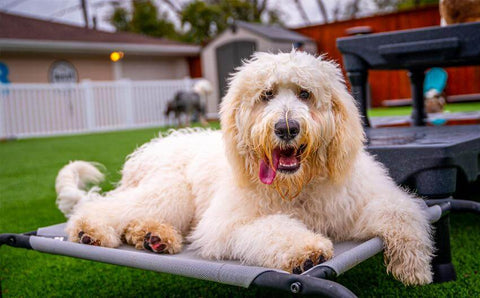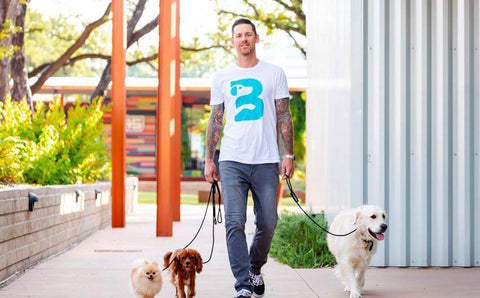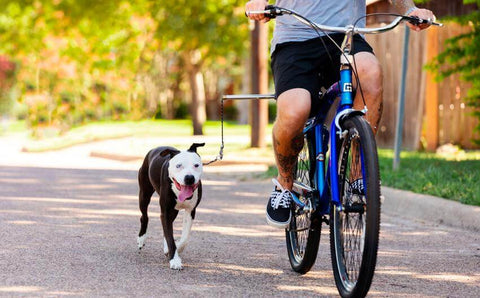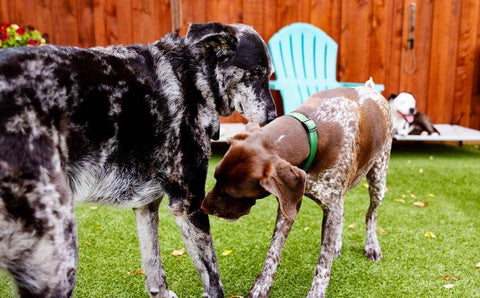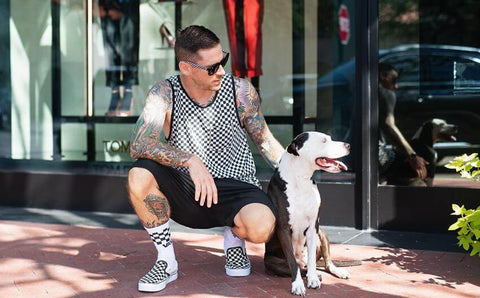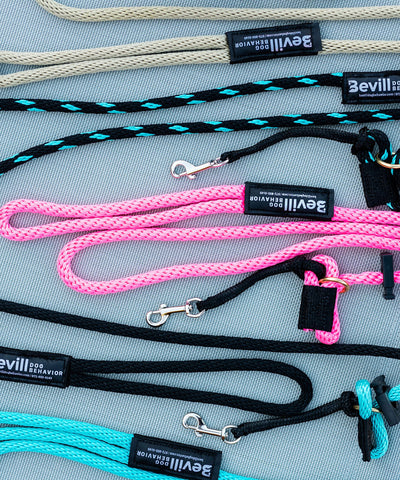Today we’re talking about happiness. What is a happy dog?
Think of a dog running around, tail wagging a million miles an hour and tongue flapping out the side of their mouth. Do you think that dog looks happy? Now imagine a dog sitting on a cot quietly, doing nothing. Is that dog happy?
It doesn’t matter what the dog is doing, it’s about how they’re doing. Humans are taught from an early age that adventure and excitement are fun, and that stillness and quiet are boring. Then we take this skewed viewpoint and impose it on our dogs. It’s possible to be happy sitting quietly just as it’s possible to be excited and miserable at the same time.
A wagging tail does not equate to happiness. Excitement doesn’t necessarily mean happy, and that goes for humans and dogs alike. In fact, excitement simply means an aroused brain. Dogs are excited during fights, while chasing prey, while they’re playing or having sex. They’re excited when anxious, nervous or fearful too. The list goes on-but the main takeaway is this:
Happiness is not the same thing as excitement.
A depressed, unhappy person can have a fun or exciting night, but that doesn’t translate to ongoing happiness or contentment. Likewise, a content, balanced person can have an awful day- and that doesn’t mean they are no longer content or happy with who they are. Happiness is wholeness, contentment. Happiness is peace. Happiness is balance.
A happy dog doesn’t lash out at people or other dogs. They don’t have anxiety or overwhelming fear. A happy dog isn’t hyperactive or frustrated. Happy, content dogs are fulfilled by a good leader. A balanced dog knows how to choose calm. In a good human/dog relationship the dog was willingly chosen to surrender control to their human. The human has proven to be a calm, confident leader, and the dog can relax into the enjoyable role of a calm, balanced follower.
This leads us to fulfillment. A fulfilled dog is a content, happy dog. Not so long ago dogs were fulfilled because they lived on ranches with humans, or they were hunters, protectors, herders, retrievers, etc. Dogs had a clearly defined role, they followed their humans and were fulfilled on the physical, mental and spiritual levels. This created a relationship of trust, respect and loyalty between the human and the dog. Nowadays, most dogs live in cities, and while there’s nothing inherently wrong with that-there has certainly been an increase in unfulfilled dogs.
You see, the city is a confusing place for dogs. They don’t understand what they’re supposed to do, or how they’re supposed to behave. That’s not a problem if they have a calm, confident leader they can look to for direction-but most people haven’t filled that role for their dog. In short, the leader must provide everything the dog needs to be fulfilled. Let’s take a look at what that means in our dog fulfillment formula:

We can see that our dog needs exercise, rules/boundaries, and appropriately timed affection. The problem we see most often is that people give affection because it feels nice for the human, not necessarily the dog. If you give affection at the wrong time, you are reinforcing the wrong behaviors (i.e. an overexcited mind). So first we must start with physical and mental challenges. We must show our dogs what is expected of them, then we can give the reward.
This means dogs need physical challenges, in the form of exercise every single day. This fulfills them on the instinctual level, works their body, and ultimately, builds trust. A walk is a great way to work on instinctual fulfillment. Dogs also need mental challenges, every single day. We need to create clear rules, for example wait at the door/threshold for an invitation to come through. This fulfills the dog on the intellectual level, works their mind, and builds respect. Finally, once we have fulfilled the body and mind, we can give affection. This fulfills the dog on the emotional level, fills the heart and builds loyalty. A little bit goes a long way here- a simple scratch behind the ears, some time with a toy, or even access to food/treats. The important thing to remember is that we only reward a calm state of mind. This is the key to a happy dog. Remember happiness is NOT excitement. Happiness is contentment and balance.
<< Previous Article: Four States Of DogNext Article: 23:59:59 >>

